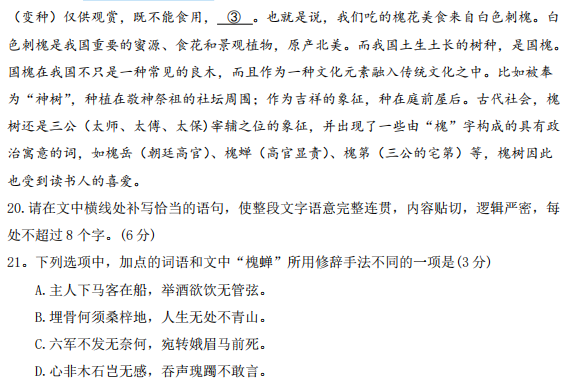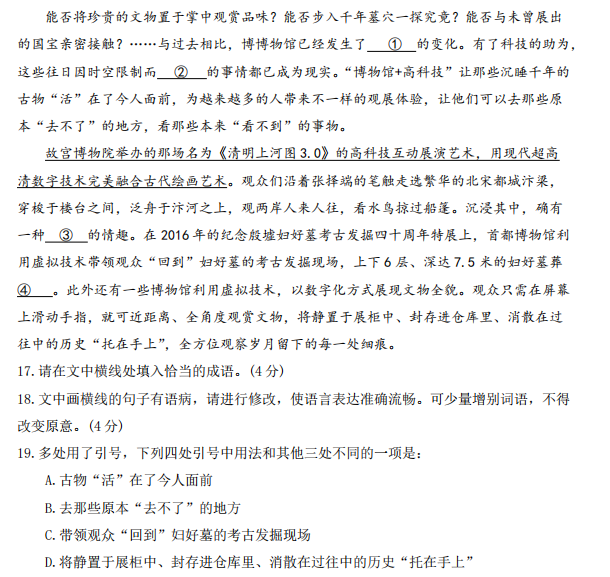Can a small group of drones(无人机)guarantee the safety and reliability of railways and,at the same time, help railway operators save billions of euros each year? That is the very likely future of applying today's "eyes in the sky" technology to making sure that the millions of
kilometres of rail tracks and infrastructure(基础设施)worldwide are safe for trains on a 24/7 basis.
Drones are already being used to examine high-tension electrical lines. They could do precisely the same thing to inspect railway lines and other vital aspects of rail infrastructure such as the correct position of railway tracks and switching points. The more regularly they can be
inspected, the more railway safety, reliability and on-time performance will be improved. Costs would be cut and operations would be more efficient(高效)across the board.
That includes huge savings in maintenance costs and better protection of railway personnel safety. It is calculated that European railways alone spend approximately 20 billion euros a year on maintenance, including sending maintenance staff, often at night, to inspect and repair the rail
infrastructure. That can be dangerous work that could be avoided with drones assisting the crews'efforts.
By using the latest technologies, drones could also start providing higher-value services for railways, detecting faults in the rail or switches, before they can cause any safety problems. To perform these tasks, drones for rail don't need to be flying overhead. Engineers are now working
on a new concept: the rail drones of the future. They will be moving on the track ahead of the train,
and programmed to run autonomously. Very small drones with advanced sensors and AI and travelling ahead of the train could guide it like a co-pilot. With their ability to see ahead, they could signal any problem, so that fast-moving trains would be able to react in time.
What function is expected of the rail drones?
- A.To provide early warning.
- B.To make trains run automatically.
- C.To earn profits for the crews.
- D.To accelerate transportation.
正确答案及解析
正确答案
解析
包含此试题的试卷
你可能感兴趣的试题
《红楼梦》写到“大观园试才题对额”时有一个情节,为元妃(贾元春)省亲修建的大观园竣工后,众人给园中桥上亭子的匾额题名。有人主张从欧阳修《醉翁亭记》“有亭翼然”一句中,取“翼然”二字;贾政认为“此亭压水而成”,题名“还须偏于水”,主张从“泻出于两峰之间”中拈出一个“泻”字,有人即附和题为“泻玉”;贾宝玉则觉得用“沁 芳”更为新雅,贾政点头默许。“沁芳”二字,点出了花木映水的佳境,不落俗套;也契合元妃省亲之事,蕴藉含蓄,思虑周全。
以上材料中,众人给匾额题名,或直接移用,或借鉴化用,或根据情境独创,产生了不同的艺术效果。这个现象也能在更广泛的领域给人以启示,引发深入思考。请你结合自己的学习和生活经验,写一篇文章。
要求:选准角度,确定立意,明确文体,自拟标题:不要套作,不得抄袭:不得泄露
个人信息:不少于 800 字
- 查看答案
辛弃疾《永遇乐·京口北固亭怀古》中“_______,_________”两句,表现了当年刘裕率军北伐时的强大气势。
- 查看答案
杜甫《登高》中“_______,_________”两句都使用了叠字,从听觉、视觉上突出了对景伤怀的感受。
- 查看答案


